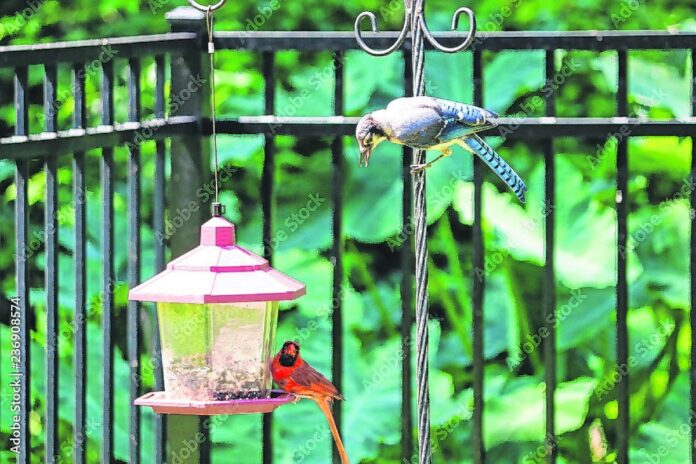
HANCOCK COUNTY — Social distancing has become less common these days as more people are getting vaccinated against COVID-19, but it turns out that it might become a necessity for our feathered friends.
As a mysterious avian disease spreads in much of Indiana, experts are advising people to avoid feeding birds, whether through a backyard feeder or by dropping food outdoors, because keeping birds from congregating can slow or stop the spread of the disease.
Hancock County was recently added to the Indiana Department of Natural Resources’ list of 50 counties in the state that have seen reports of sick or dead songbirds impacted by the unknown malady. It is now recommending that residents across the state refrain from feeding birds.
The Facebook page of Greenfield Birders, a birdwatching group with over 300 members sponsored by the Greenfield Parks Department, is normally full of participants sharing their bird photos and helping each other identify species. Now, many are reminding each other to take down bird feeders and expressing concern about those still gathering in their backyards.
The DNR started receiving reports of the issue in late May, beginning in Monroe County. It appears to cause neurological symptoms that affect birds’ behavior; eye swelling; and crusty discharge around the eyes.
Species known to be affected include the blue jay, American robin, common grackle, starling, northern cardinal and brown-headed cowbird. All are common backyard visitors.
Lais McCartney, an educator for agriculture and natural resources at Purdue Extension Hancock County, said she hasn’t yet received any reports of dead birds in Hancock County. She said the reports of disease are concerning because scientists do not yet know what is causing it or how it is spread.
“They don’t know much about it yet, and I hope they find out more about it soon,” she said. “…It’s a mystery, and it’s sad.”
According to the DNR, the birds impacted have tested negative for two diseases that have raised alarms in the past, avian influenza and the West Nile virus.
“DNR staff have collected samples and submitted them to the Indiana Animal Disease Diagnostic Laboratory. Final laboratory diagnostic results are pending – the cause or transmission is currently unknown and still under investigation,” the department said on its website.
McCartney advised residents who normally feed the birds in their backyards to remove their feeders, including those for hummingbirds. She said birds will be able to find plenty to eat in the wild.
Citing advice from the Indiana Board of Animal Health, McCartney also said that residents who keep domestic chickens or other birds outside should be careful to keep wild birds from getting into pens. Among the many unanswered questions about the disease is what species of birds it can be spread to; chicken owners are encouraged to protect their poultry.
If you spot a sick or dead bird, it should be reported to the Indiana Department of Natural Resources so that the state can keep track of the spread of the disease. To make a report, visit in.gov/dnr.
[sc:pullout-title pullout-title=”How you can help ” ][sc:pullout-text-begin]
To help prevent the spread of a disease impacting birds, the Indiana Department of Natural Resources recommends that all bird feeders, including those for hummingbirds, be taken down. You also should not feed birds at parks or in the wild.
If you keep chickens or other domestic birds outside, be careful to prevent other birds from entering their enclosures.
If you spot a sick or dead bird, report it to the Indiana DNR online at in.gov/dnr.
[sc:pullout-text-end]
